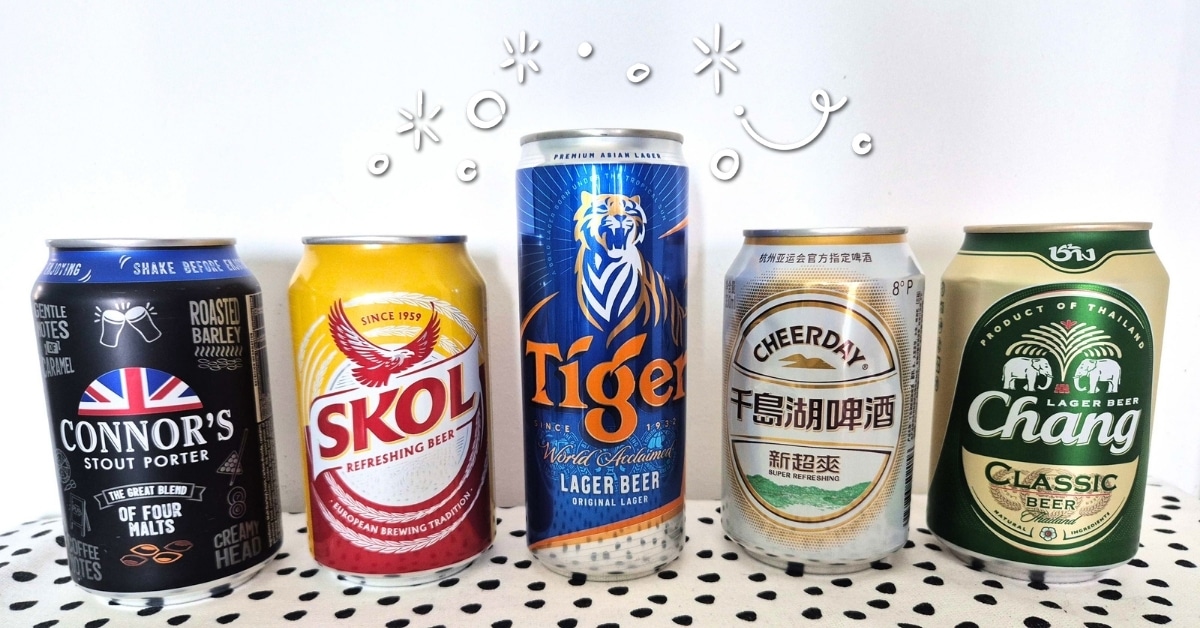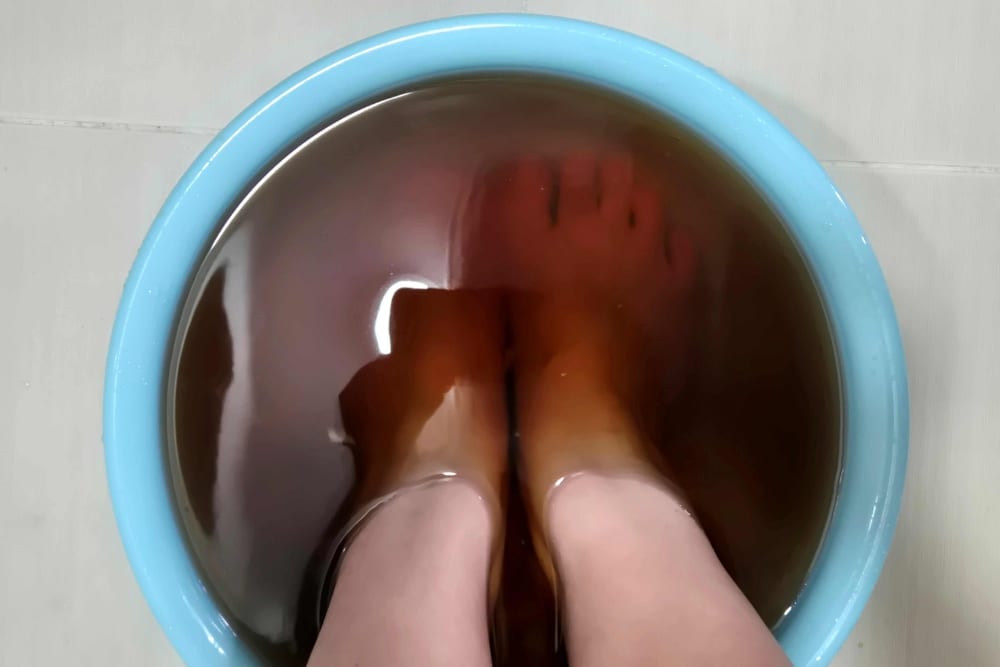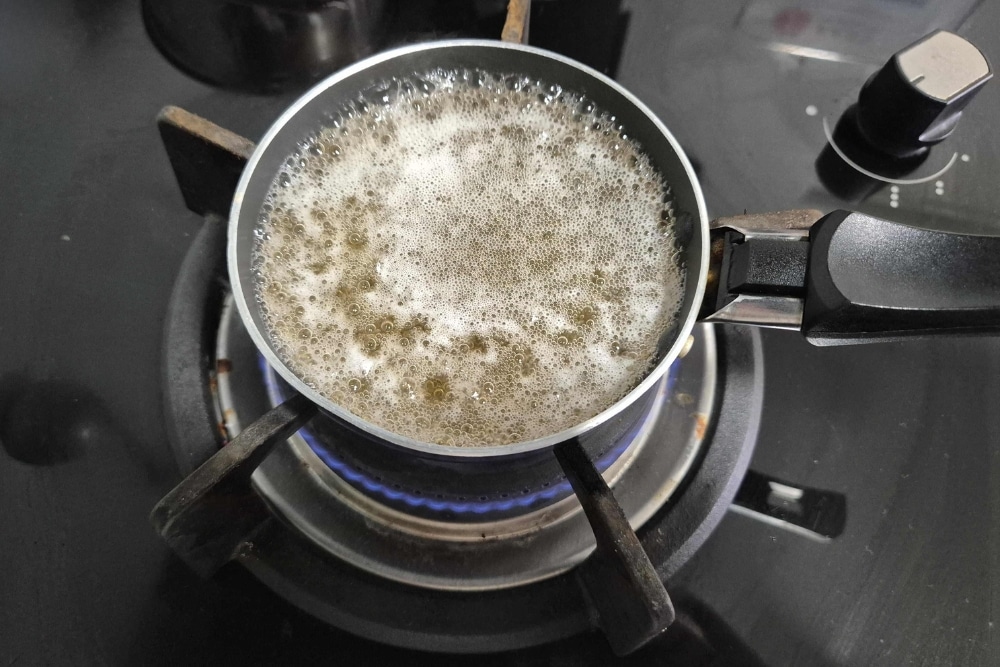
As someone who loves her beers, the phrases “leftover beer” or “stale beer” are seldom found in my vocabulary.
Admittedly however, there are rare occasions when I could not finish a can or bottle of beer in one sitting. This usually happens when I am either too full, or when the beer had gotten too warm.
I would usually just dispose of such leftover beer down the sink, since beers don’t store well. But that was all before I learnt of the many cool ways it can be used for, other than drinking.
The most common way to use beer is in cooking. Dishes such as beer can chicken or beer-battered fish and chips are the usual suspects. Beer is also often used as a marinade for tenderising meat and a flavour-enhancer for soups, stews, and dips.
Still, beyond its various methods of consumption, did you know that beer (whether fresh or stale) can be utilised as a cleaning agent, or as an ingredient in skincare treatments as well?
Here’s the what and how.
Advertisement
Using leftover or stale beer as a skincare ingredient
Note: If you have sensitive skin, do check if you are allergic to beer or any of its ingredients, such as malts, hops, or yeast, before attempting any of the following.
- DIY beer and egg white face mask
Make your own face mask using leftover beer, eggs, and lemons. Egg white is known for tightening pores and absorbing excess oil on facial skin. But did you know that beer also contains ingredients deemed beneficial to facial skin?
For instance, brewer’s yeast and malts (germinated barley) in beer contain various proteins and minerals that can restore PH balance. Meanwhile, vitamin B and antioxidants help get rid of dead skin cells as well as reduce acne breakouts.
Making a DIY beer face mask is simple: just mix two tablespoons of beer with one egg white and one tablespoon of lemon juice, then lather the mixture onto the face as a mask. Leave it on for 10-15 minutes before rinsing it off with lukewarm water.
If I run out of Korean face masks at home, I make do with a homemade beer face mask as it does help make my face feel supple and refreshed.
Just remember that as there are perishable elements, any leftover mixture must be stored in an airtight container in the fridge and be used up within 3-5 days.
- Soothing beer foot soak

Credit: Marguerita Tan
Many non-drinking friends often pass me cans or bottles of dark beer such as stouts or porters. Unbeknown to them, not only do I enjoy drinking dark beer, I use them to soak my feet too.
Dark beer is recommended for foot soaks as its higher concentration of malts and hops is deemed more effective in softening skin and smoothing calluses. The alcohol also acts as a natural antiseptic, cleansing the feet from bacteria or fungi.
To prepare the soak, I fill a basin with enough warm water (best for relaxation and improving circulation) to cover my feet up to my ankles. I then add leftover dark beer – my favourite is Connor’s Stout Porter, a four-malt blend with strong coffee and caramel notes.
I’ll usually soak for 10-15 minutes. Once done, I will rinse and dry my feet before hosing down in the bathroom. The hosing helps as dark beer usually leaves a strong, lingering aroma.
Beer foot soaks truly make the feet feel soft and relaxed. It is my favourite use for leftover beer. Plus, it is way cheaper than a foot soak at the spa.
- Homemade beer shampoo
Beer shampoo has long been a thing as the proteins, vitamins, and antioxidants found in beer ingredients are said to add shine and body to one’s hair.
For a DIY beer shampoo, light beer with low alcohol by volume (ABV) is recommended, as high ABV can be too drying.
Most light beers have an ABV of 5%, but you can find lagers with lower ABVs such as Skol (4%) and Cheerday (3.1%). You can also consider non-alcoholic beers like Heineken 0.0% or Asahi Super Dry 0.0%. Just avoid dark beers as these may leave residue in your hair.

Credit: Marguerita Tan
First, degas a cup of flat or stale beer by boiling it until it reduces to ¼ cup. This removes the alcohol and carbonation.
Then cool the boiled beer to room temperature before adding it to a cup of regular shampoo.
Use the beer shampoo as you would normally, but try giving your scalp a good massage at the same time to really let the mixture sink in. Rinse the suds off thoroughly with water after.
The DIY beer shampoo helps refreshes my scalp and adds volume to my short hair.
As there are no preservatives used, homemade beer shampoo needs to be stored in the fridge in an airtight bottle and used within 1-2 weeks.
- Beer bath soak
Yes, there are places where you can drink beer while bathing in it. You can do both at the same time in beer spas around the world. I know of some in Orlando, USA and in Batam, Indonesia.
Just note that the beer used in commercial beer baths are generally not really drinkable, as they are an infusion comprising natural beer ingredients mixed with mineral-rich salts and warm water.
I would personally not recommend a homemade beer bath though, as you should not have that much leftover beer at home to fill a bathtub in the first place (right?).
But let’s say somehow you’ve gotten your hands on a carton (or cartons) of beer gone bad, then perhaps this is something you can consider.
Beer ingredients such as malts, hops, and brewer’s yeast contain vitamins and proteins that are good for hair and skin, adding body and shine to the former and exfoliating and rejuvenating the latter.
If you are game to bathe in beer, why not check if there is a beer spa in your next overseas destination. There are currently none in Singapore.
Also read:
Food Intolerance: Why Our Bodies Reject Certain Foods As We Get Older
Food intolerance happens more frequently than we think as we age. Balvinder Sandhu explores why, and how to tell a food intolerance from a food allergy.
Fried Rice Paradise: 7 Spots For The Best Fried Rice In Singapore
Here’s some of the best spots for a comforting plate of hearty fried rice in Singapore.
Using leftover or stale beer as a cleaning agent
Truth be told, when I learnt that beer can be used as a cleaning and polishing agent, I seriously wondered what it’s actually doing to our insides when we drink it! But I digress…
- Metal rust remover

Credit: Marguerita Tan
If you do not have baking soda and vinegar at hand, beer can be handy in removing, say, rusty spots on your metal shower accessories or kitchenware.
All you have to do is wet a cloth or kitchen towel with leftover beer then scrub the rusty spots. Rinse with water after the rust is removed.
For more stubborn patches, you can cover the rusty bits with a beer-drenched wash cloth and leave it overnight. Soaking them in beer works too.
Light beers such as lagers and pale ales are recommended as the carbonation and certain acids found in such beers help break down the rust. Avoid using dark brews as they are less carbonated and can leave stains.
Note that beer can only remove relatively new rust. For weathered, heavily rusted items, you may need to use dedicated rust removal methods.
- Gold jewellery cleaner
Hops in beer are said to contain alpha acids that help in removing dirt and grime. During instances when I have some leftover light beer, I would give my daily-worn gold necklace a quick beer cleanse.
I pour stale beer onto a wash cloth, gently rub the gold chain, rinse with water, before wipe drying with a clean towel. My gold necklace definitely looks much cleaner if not shinier after each session.
Just be mindful not to use beer for jewellery with gemstones as it may damage the gems.
- Dull wood polisher
I never thought that stale beer can be used to brighten up dull wooden furniture, but both brewers and interior designers seem to swear by it.
Unlike hoppy light beers for rust, dark beers such as stouts and porters are preferred in restoring wood as they are malt-heavy and have more sugars and other properties said to give wood a richer lustre and colour.
It is not meant for all wood types however. It’s more suited for darker woods such as teak, walnut, and mahogany.
Make sure your wooden items do not have paint, lacquer, or varnish finishes as the alcohol may interact and damage them. Always test on a small, inconspicuous area first to see if there is any unwanted reaction.
To polish, simply wipe the stale dark beer onto the (preferably dark) wood using a cloth, then wipe off after with a dry cloth. You should be able to see a significant difference.
- Rug or carpet stain remover
If there are coffee or tea stains on your rug or carpet, leftover beer may help to clear them as the carbonation can help loosen the stain while the alcohol acts as a solvent.
Simply pour some beer over the stain and let it soak for a few minutes. Then blot the stain with a clean cloth and, fingers crossed, the stain is gone. If not, try repeating a few more times. Once done, clean the spot with soap and water to remove any beer aroma.
Leftover beer may not be apt when it comes to fellow beer stains, pet stains, or greasy stains. For those, try the time-tested baking soda and vinegar cleaning combo. If that fails, it’s time to seek professional help or time to buy a new rug.





